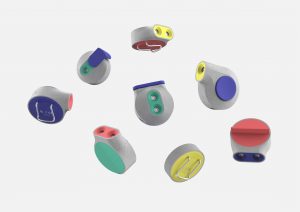
|
|
# 2020 The Ventnor Brickworks |
|
Nature has the power to offer symbiotic connections with material production, but our current relationship with natural resources is one of exploitation rather than collaboration. The Ventnor Brickworks tells a story of how we might revert our conditioned ideas of what that relationship looks like by taking a costly waste stream of kelp and turning it into valuable construction materials for global and local contexts.
The Ventnor Brickworks is a new form of distributed, low energy, low cost production of eco-friendly building materials. With the innovative addition of kelp as a key ingredient, energy savings are made across the entire brick making process. The resulting product is a carbon-negative building material with comparative strength of clay bricks, displaying impressive insulating properties, and a more sustainable life cycle.
The Brickworks fits inside a standard 12m shipping container. This modular form reduces cost of set-up, creates distributed, mobile and deliverable manufacturing hubs, and takes the production right to the source of the raw elements. This enables places like Ventnor to redefine their relationship with a costly waste stream, to produce valuable assets.The Ventnor Brickworks: building a sustainable future, brick by brick.










National University of Singapore
A new, nature-inspired system to purify air in underground environments

A new font that maintains readability whilst saving ink and reducing plastic waste

An affordable, small weeding robot to help small farms run more efficiently

KADK – The Royal Danish Academy
Using bacteria to create natural dyes and reduce the need for toxic chemicals